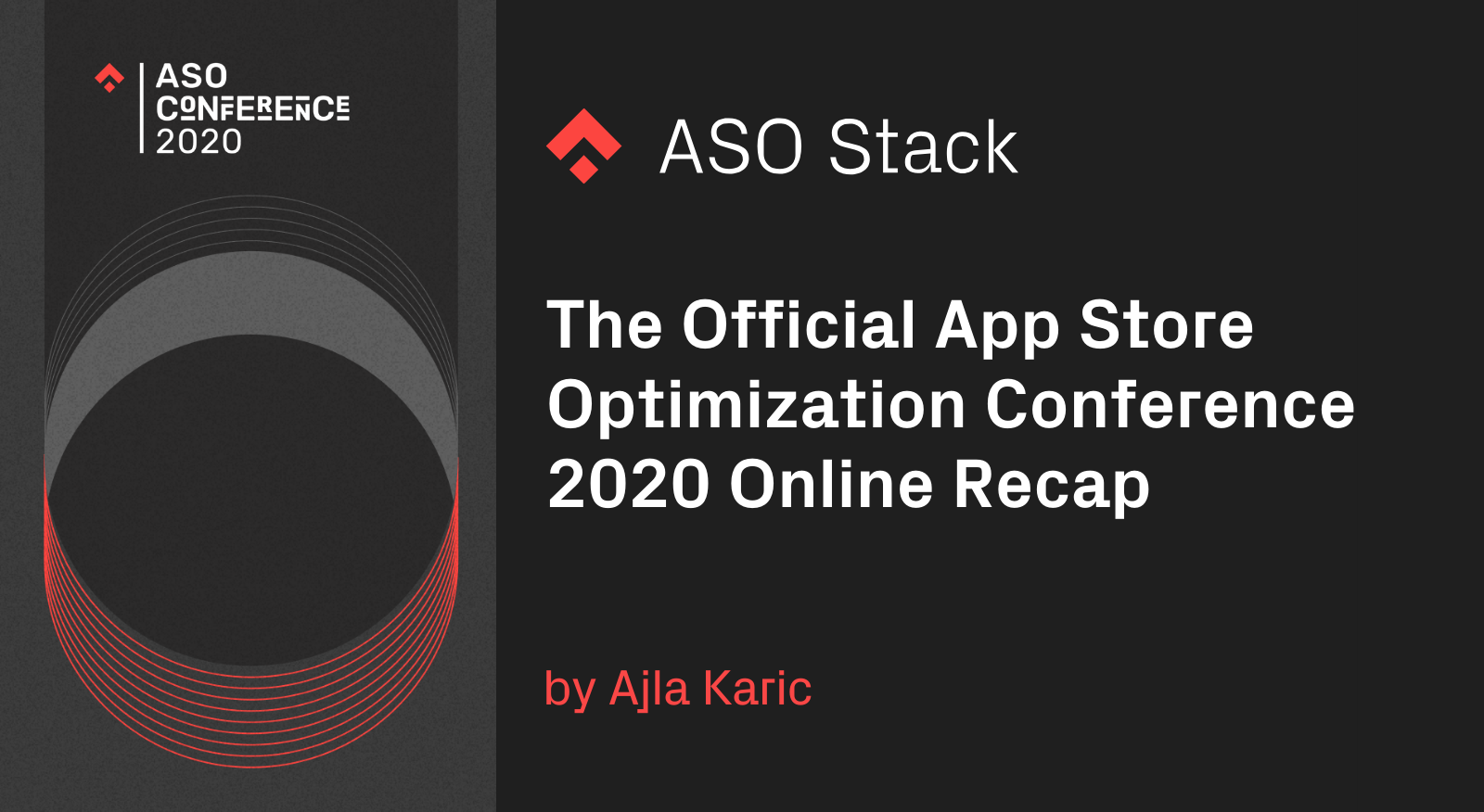
It’s been a few days since the ASO Conference in Berlin so it’s about time for an official content recap. This year the conference was held online and we were joined by over 1500 participants from across 60 different countries, despite the current difficulties and Covid-19 crisis. This article will provide the key takeaways from each session along with links to the presentations.
Session 1: Building the right dashboards to measure ASO Impact & Success
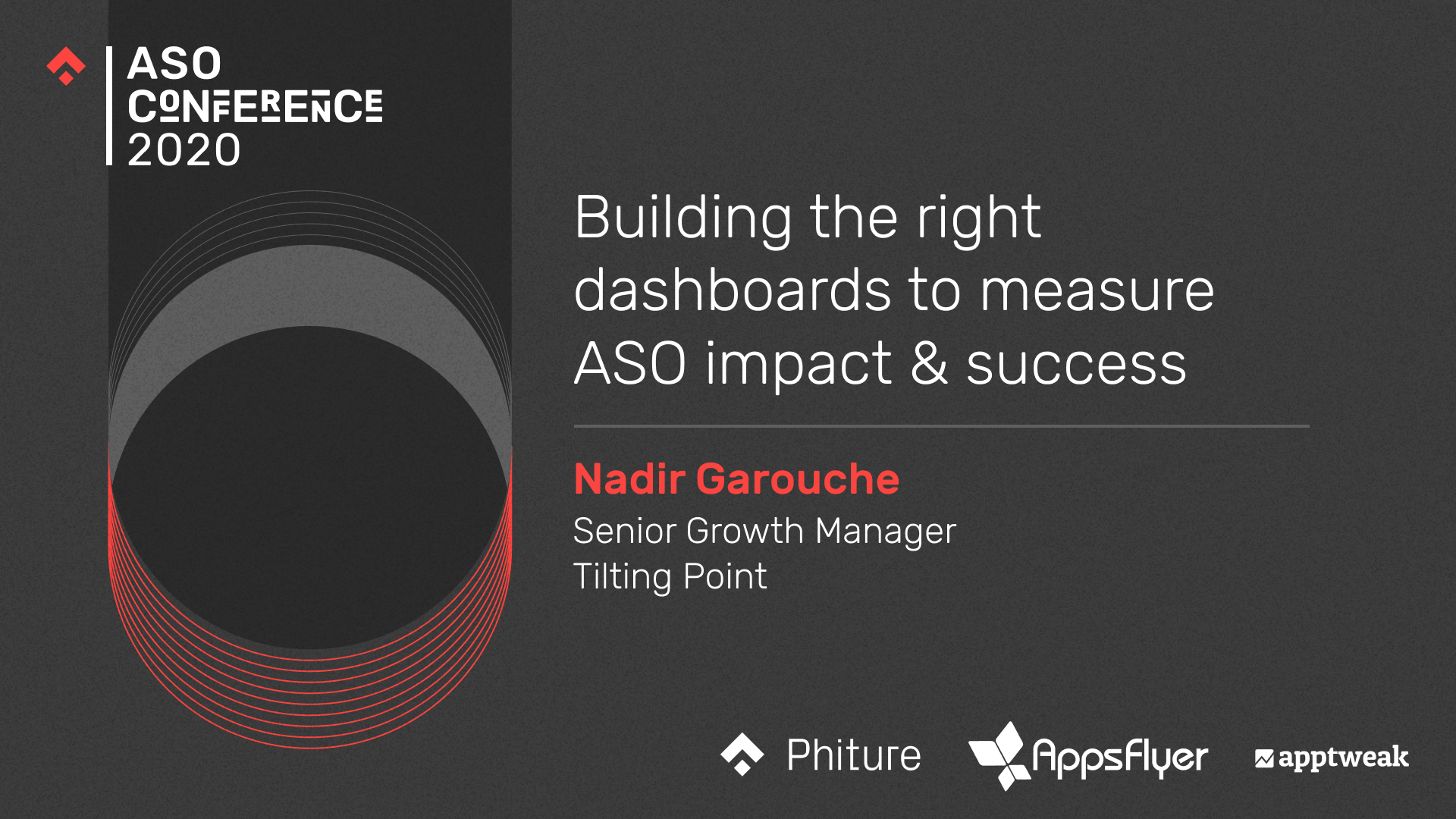
Presented by Nadir Garouche, Senior Growth Manager at Tilting Point
Presentation: Building the right dashboards to measure ASO Impact & Success
Main takeaway: The first session explained that actionable and external factors are significant to the success of your ASO campaigns and how you can ultimately measure and report on the impact of your optimizations on the performance of an app.
Main content covered:
- Approach to unifying different KPI’s
- Measure and track ASO Impact
- App Units
Session 2: Reaching coherency between ASO, Performance Marketing and Brand

Presented by Natalie Drozd, Marketing Manager at Hily
Presentation: Reaching coherency between ASO, Performance Marketing and Brand
Main takeaway: Although the ASO, Brand and Paid UA teams have the same strategic goals, it is important to take into account the short term goals that differ. This session presented the winning strategy on how to combine cross-team knowledge in creating the product page that everyone will love.
Main content covered:
- Discoverability-first-approach
- Cross-team knowledge
- ROI-first approach
Session 3: Using an NPS flow to optimize your ratings and reviews
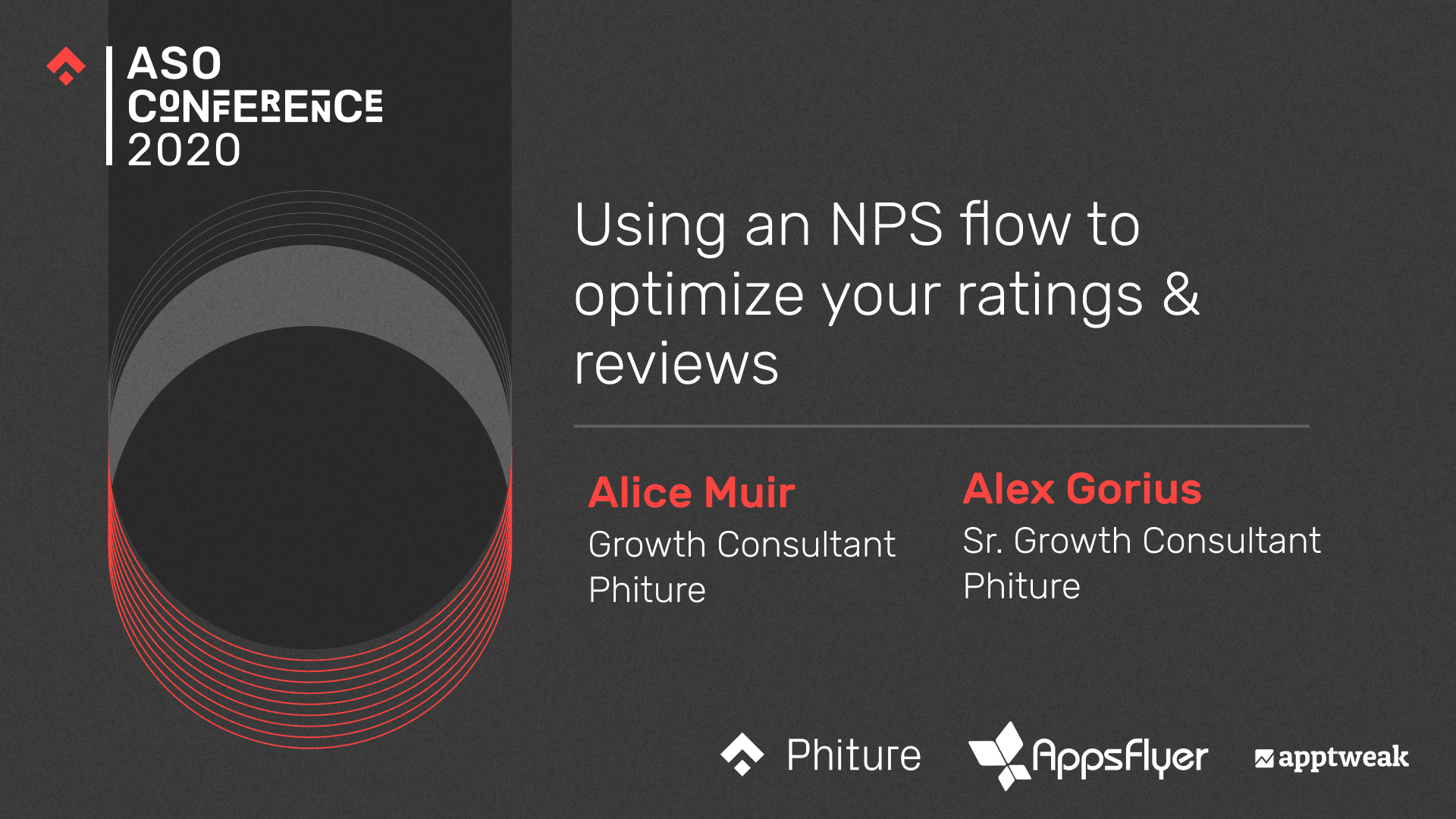
Presented by Alex Gorius and Alice Muir, Growth Consultants at Phiture
Presentation: Using an NPS flow to optimize your ratings and reviews
Main takeaway: The session outlined the best possible way to use Net Promoter Scores (NPS) and what its general advantages are. The NPS measures user experience on a scale of 0 to 10 and its advantages include minimizing churn rate, increasing visibility by prompting promoters to refer to your app and generally improving the app by identifying problems associated with the product. Alex and Alice also stated the importance of gathering data on NPS over time to have a better understanding of detractors and leverage promoters. Lastly, they discussed how important it is to find the right balance between different kinds of metrics when building NPS with the aid of an example from Google Play.
Main content covered:
- Minimize churn rate
- Increase the rating of an App
- Metrics when building a NPS
Session 4: Panel: ASO & Brand
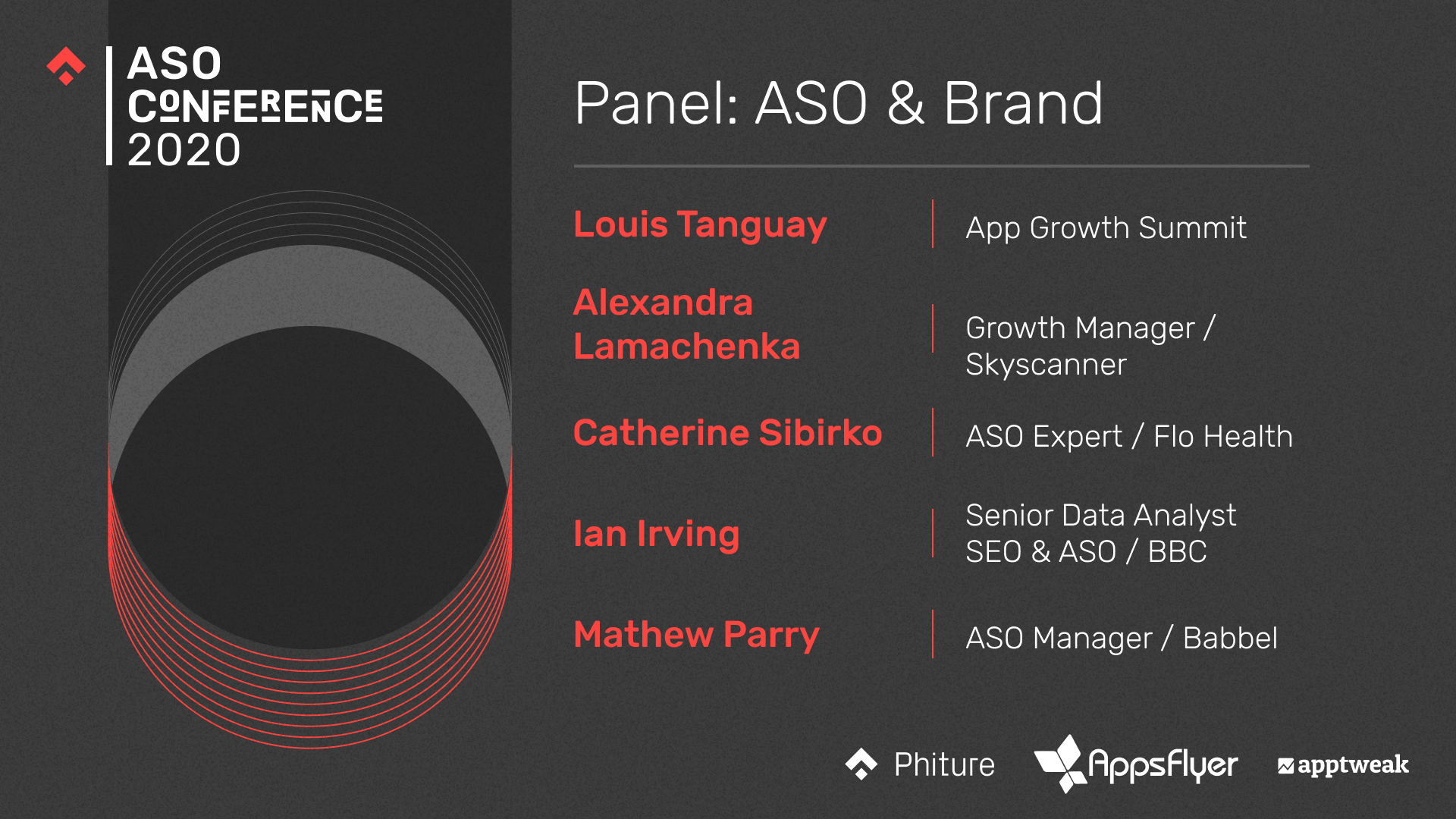
Moderated by Louis Tanguay — App Growth Summit
Alexandra Lamachenka, Growth Manager — Skyscanner
Catherine Sibirko, ASO Expert — Flo Health
Ian Irving, Senior Data Analyst SEO & ASO — BBC
Mathew Parry, ASO Manager — Babbel
The discussion between the panelists confirmed that their app installs are generally based on a few branded keywords which concluded that the significance of ranking well on generic keywords is important for an app’s success as users are searching for them without a particular brand in mind.
Main content covered:
- Branded keywords
- ASO, Product and Brand
- Volumes, rankings and other necessary metrics
Session 5: ASO in Japan: Understanding how to crack open the Japanese market

Presented by Azusa Hatano, ASO Expert at Phiture
Presentation: ASO in Japan: Understanding how to crack open the Japanese market
Main takeaway: Since there could be up to 5 different keywords for one word in the Japanese market, Adzsa shared tips and insights on how to successfully tackle keyword optimization and conversion rate optimization based on her experience of managing ASO for many different verticals in Japan.
Main content covered:
- Hiragana has the highest search popularity
- Seasonal events are important to understand
- The significance of using Kawaii, animism and highlighting social proof and features
Session 6: An open Q&A on the forces of Organic Uplift
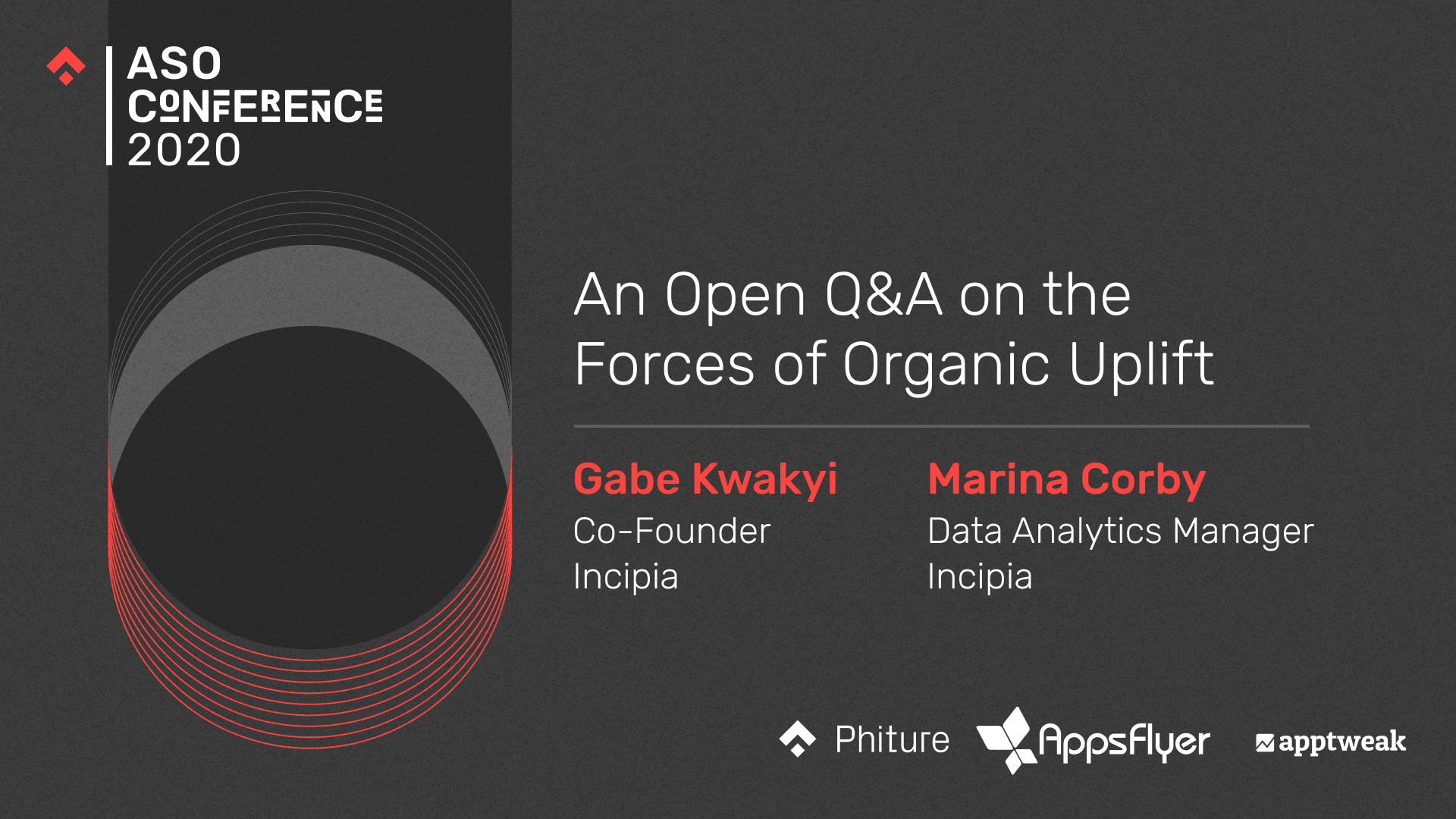
Presented by Gabe Kwakyi, Co-founder at Incipia and Marina Corby, Data Analytics Manager at Incipia
Presentation: An open Q&A on the forces of Organic Uplift
Main takeaway: ‘Organic uplift’ is a term that is generally heard and used in the industry, but what does the term actually mean and how can it be factored into your ASO strategy? Gabe Kwakyi and Marina Corby outlined the various types of organic uplift which are divided into two categories: user-level organic uplift and ecosystem organic uplift.
Main content covered:
- User-level organic uplift and ecosystem organic uplift
- Simple models go a long way
- New apps on iOS generally have a better organic uplift because of high visibility
Session 7: Synergies between ASO & Apple search ads

Moderated by David Llewellyn, Marketing Director EMEA at Appsflyer
Maryia Filimanchuk, Lead Marketing Manager at Apalon
Quoc Anh Luong, Mobile Marketing Manager at Omio
Thomas Petit, Mobile Growth Expert
Main takeaway: The importance of looking for the best keywords to target involves considering many factors. The panelists discussed using different keyword groups to analyze which ones perform better and where also suggesting that a good strategy would be to differentiate.
Main content covered:
- Low competition words
- Only target relevant keywords
- The importance of having synergy between keywords and landing page or screenshots
Session 8: The Apple Search Ads Stack: Introducing a cheat-sheet for running ASA

Presented by Andrea Raggi, Search Ads Lead at Phiture
Presentation: The Apple Search Ads Stack: Introducing a cheat-sheet for running ASA
Main takeaway: Andrea Raggi presented a cheat-sheet on how to run Apple Search Ads effectively as well as explaining the various layers that should be considered in the framework.
Main content covered:
- Search Ads aid in increasing visibility, discoverability and driving downloads
- The ASA strategy help scale the channel and optimize performance
- The strategy can help improve ASO conversion
Session 9: How we have started our in-house localization team for app store optimization
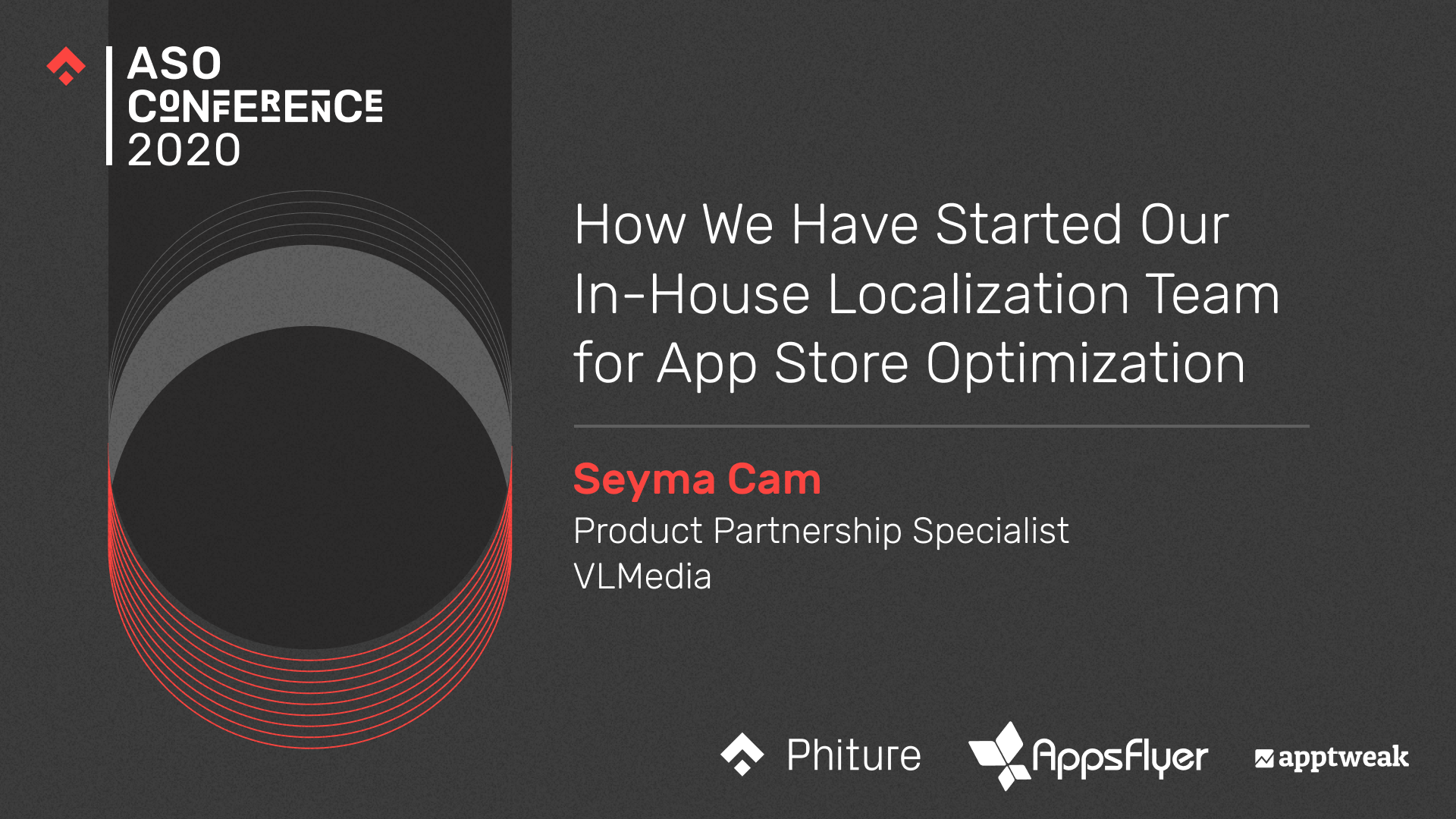
Presented by Seyma Cam, Product Partnership Specialist at VLMedia
Presentation: How we have started our in-house localization team for app store optimization
Main takeaway: Seyma Cam guided us through the process of how they localized their app in 34+ languages by building their own effective localization team in-house. They took into account where their users were, where the most downloads were coming from, where the highest reviews/ratings were and lastly where their competitors were localized.
Main content covered:
- VLMedia looked at 2 core elements when determining which Geo’s to localize in
- Localization goes beyond ASO efforts
- Since being localized, it proved to be more engaging
Session 10: Automating localization: Creating a Seamless Flow for 40+ languages with the weekly release cycle
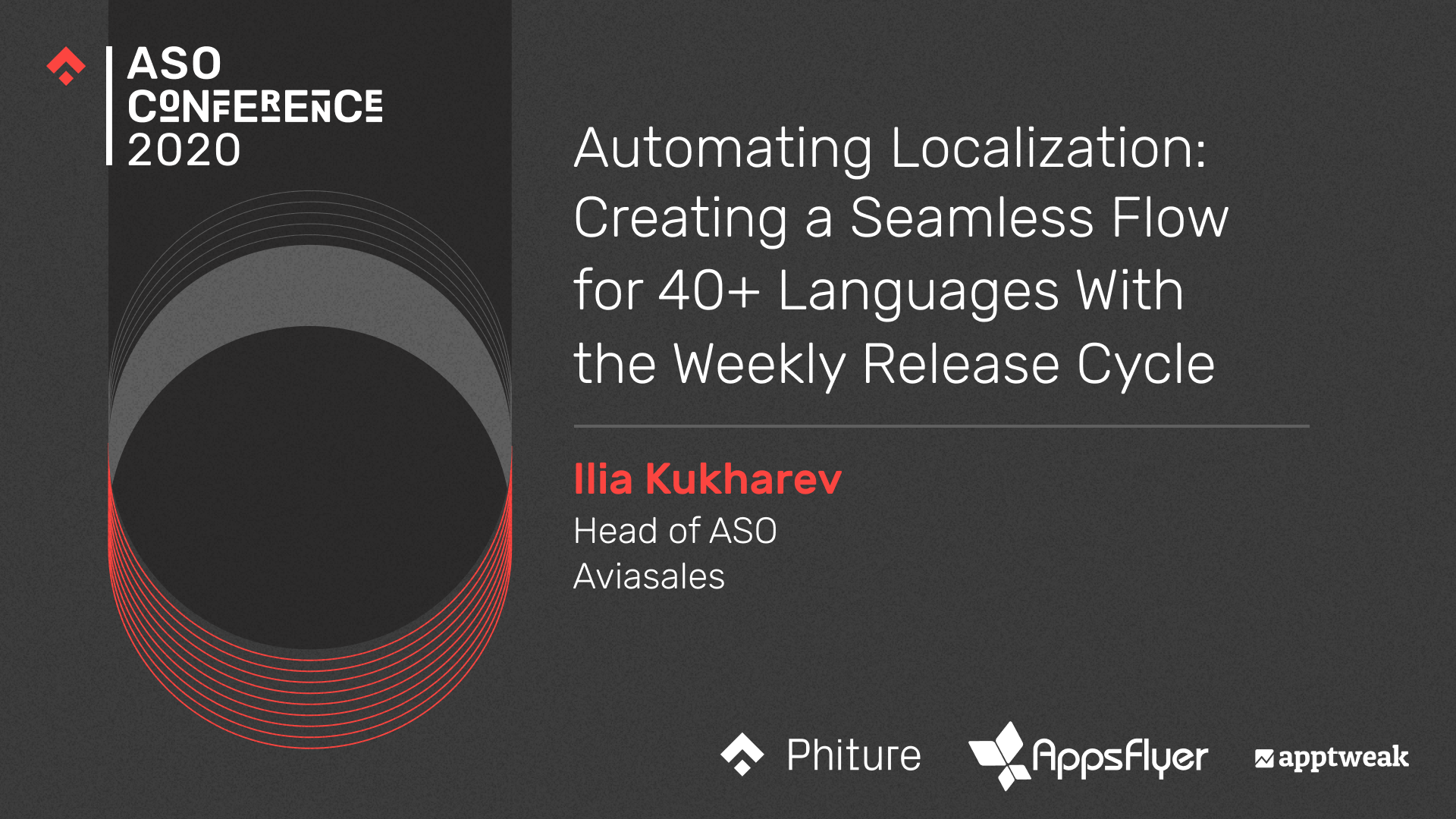
Presented by Ilia Kukharev, Head of ASO at Aviasales
Presentation: Automating localization: Creating a Seamless Flow for 40+ languages with the weekly release cycle
Main takeaway: The benefits of localization are endless, but extremely inefficient time-wise when regularly developing an app as well as translating it in many languages. Ilia Kukharev explained how the company automated the process which reduced the time needed for translations from 15% to just 1% saving the team a lot of time. With the aid of Crowdin, the cloud-based solutions ultimately streamlines localization management.
Main content covered:
- Automation of the translation process
- Crowdin streamlines localization management
Session 11: Dealing with False Positive A/B Tests Results in Google Play Experiments
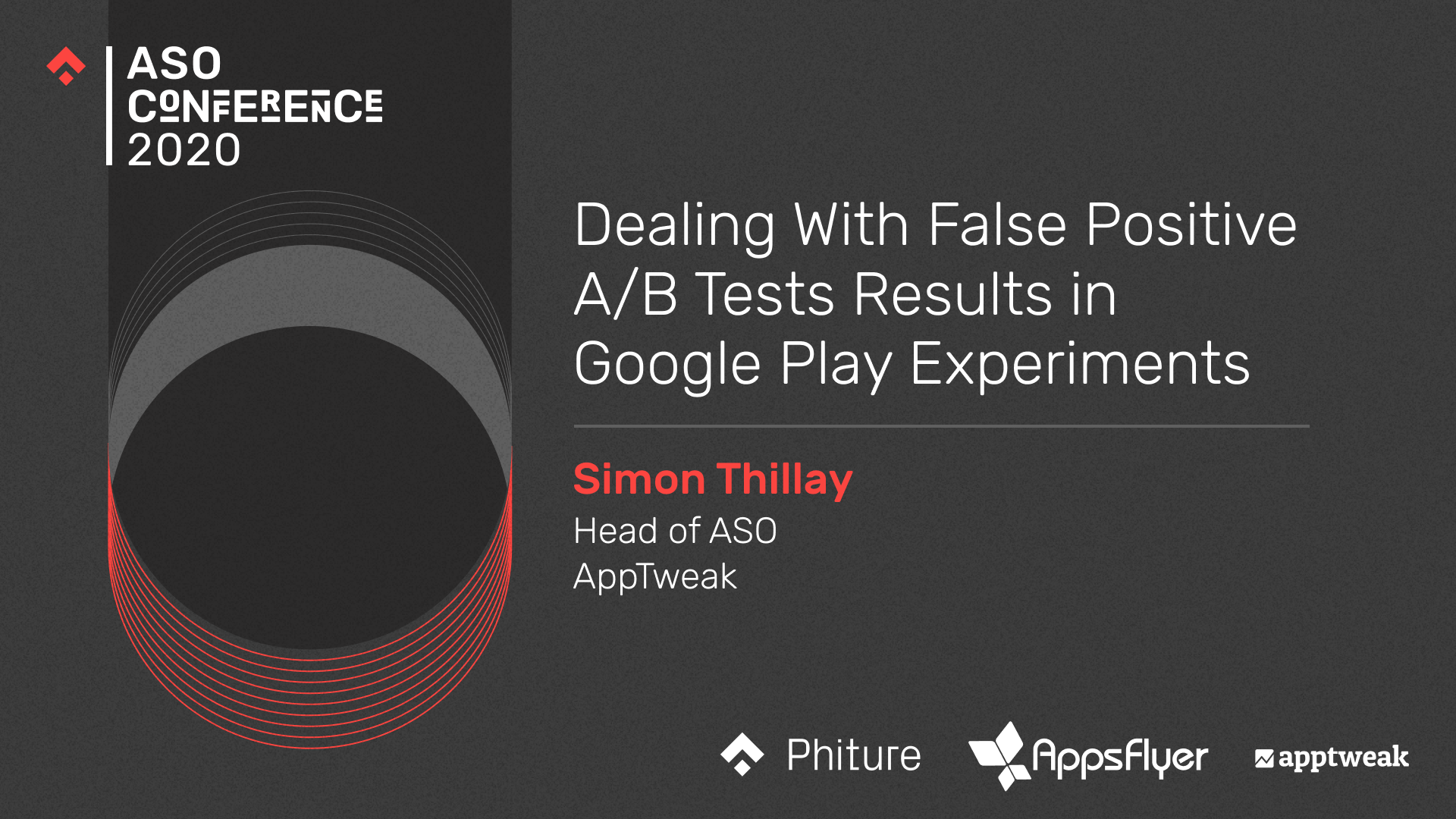
Presented by Simon Thillay, Head of ASO at AppTweak
Presentation: Dealing with False Positive A/B Tests Results in Google Play Experiments
Main takeaway: In this session, Simon Thillay presented a testing protocol that helps reduce statistical noise in GP Experiments which also identifies possible false-positive results. He also pointed out that receiving enough downloads in each test sample is important to reach good enough statistical power.
Main content covered:
- False-positive results are caused by a lack of control
- In order to reach good enough statistical power, quite a number of downloads are needed in each test sample
Session 12: Rating libraries on iOS and Android
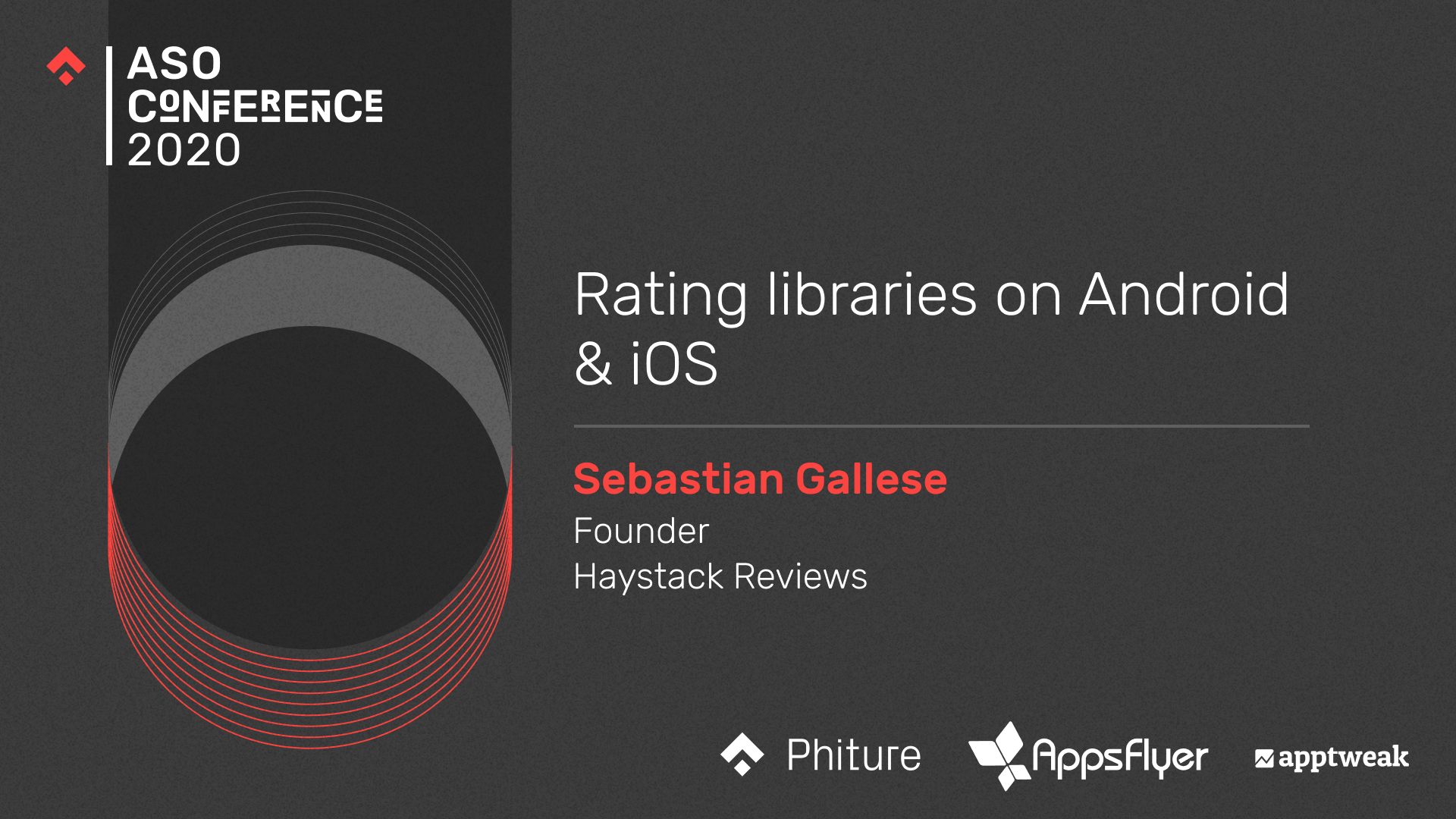
Presented by Sebastian Gallese, Founder at Haystack Reviews
Presentation: Rating libraries on iOS and Android
Main takeaway: Although it is extremely important to ask for ratings, Sebastian states that it is challenging to experiment when your rating mechanism is hardcoded. To overcome this issue, developers can tap into existing libraries which would save them less time setting everything up and allow more time for experimentation.
Main content covered:
- ‘Skent/Amplify’ on Android may be used
- ‘Armchair’ on iOS may be used
- ‘Skyost/RateMyApp on Flutter


















